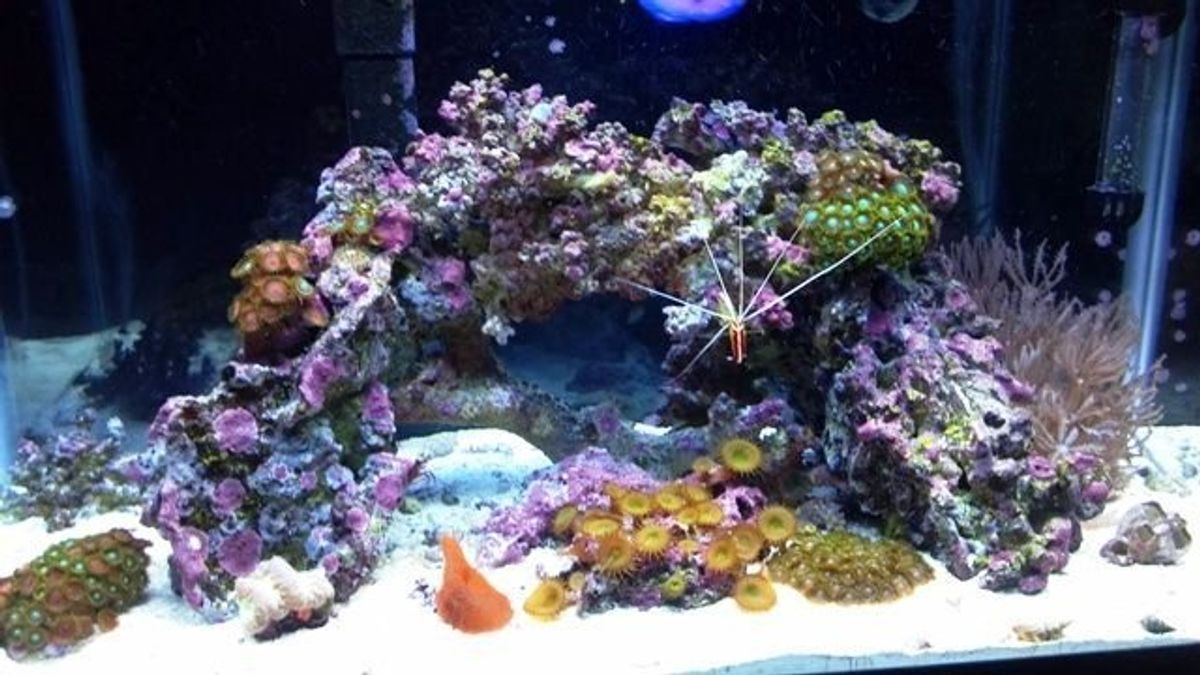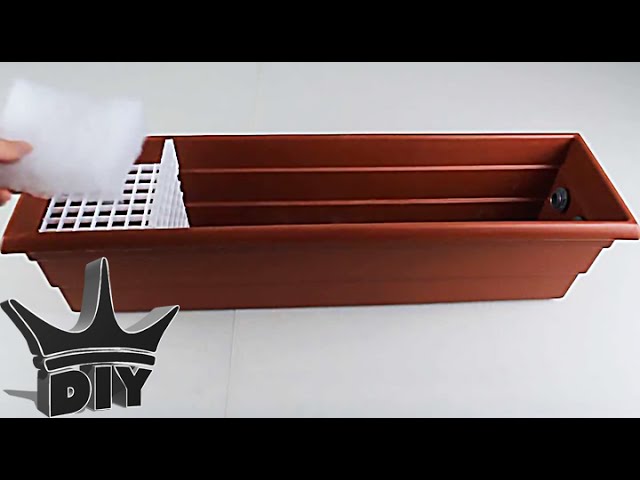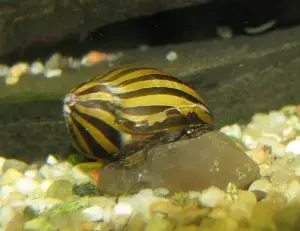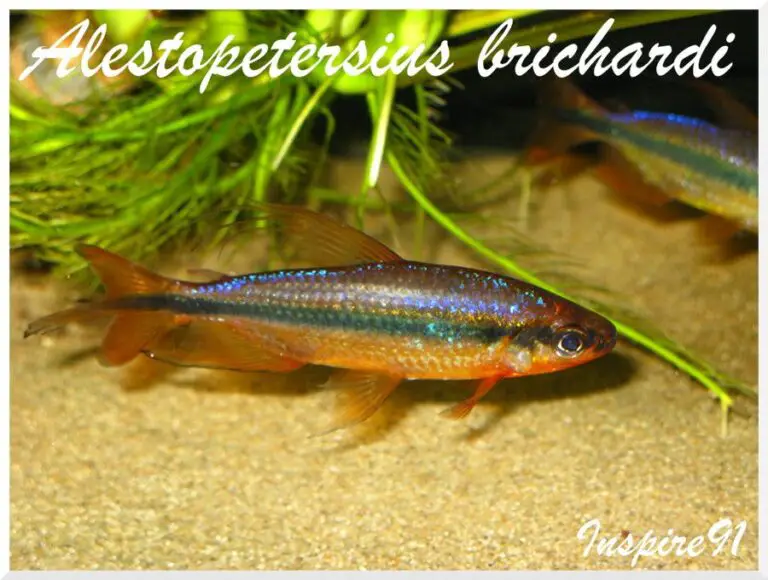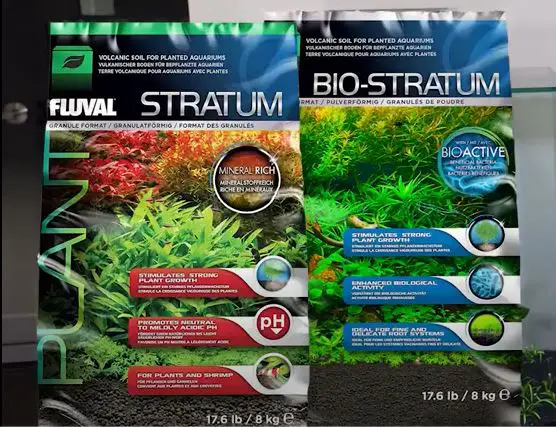Live Rock for Saltwater Aquarium: The Heart of Your Marine Aquarium
Live rock is a necessary component of a saltwater aquarium. Live rock provides biological filtration, a place for beneficial bacteria to grow, and a natural environment for fish and invertebrates.
A saltwater aquarium is a beautiful and captivating addition to any home or office, but it requires quite a bit of work to keep it thriving. One crucial component of a healthy and vibrant saltwater aquarium is live rock. Live rock is not only visually appealing, but it also serves essential biological functions.
It provides biological filtration, which helps maintain water quality, and provides a natural environment for the fish and invertebrates to thrive. Live rock also acts as a place for beneficial bacteria to grow, which helps break down organic waste and keep ammonia and nitrite levels in check. We will explore everything you need to know about live rock for your saltwater aquarium.
What Is Live Rock?
Definition And Characteristics Of Live Rock
Live rock is a unique and essential component of saltwater aquariums. It is a naturally occurring rock that is collected from the ocean and used in aquariums to provide a variety of benefits to marine creatures.
- Live rock is composed of limestone skeletons of ancient coral and other marine organisms, which have been colonized by a variety of beneficial microorganisms such as bacteria, sponges, and algae.
- It is called “live” because it hosts these living creatures, which contribute to the ecological balance and overall health of the aquarium.
- Live rock has a rough and porous texture with holes and tunnels that create hiding places and shelter for marine life. It also provides a natural source of food through algae growth and microscopic organisms that inhabit the rock.
The Benefits Of Adding Live Rock To Your Saltwater Aquarium
Adding live rock to your aquarium offers numerous benefits to both the aesthetic and biological conditions of the tank.
- Live rock acts as a natural filtration system by providing beneficial bacteria that help break down waste products and harmful toxins in the aquarium.
- It helps create a natural environment that resembles the ocean floor, providing a habitat, shelter, and hiding places for marine creatures. This promotes healthy behavioral and territorial patterns.
- Live rock promotes the growth of beneficial microorganisms, including algae, which can be a source of food for grazing fish and invertebrates.
- It creates a visually stunning aquascape, with a variety of shapes, colors, and textures that can enhance the overall appeal of the aquarium while still maintaining a natural look.
Live rock is a necessary and valuable addition to saltwater aquariums. Not only does it create a beautiful and natural habitat for marine life, but it also serves as a biological filter that promotes the overall health and wellness of the aquarium inhabitants.
Types Of Live Rock
Live rock is a critical aspect of any saltwater aquarium. It isn’t only visually appealing but also provides hiding spots for fish and other creatures, while also playing a significant role in maintaining water quality. When it comes to selecting live rock, there are numerous options available in the market.
Following are most common types of live rock:
Aquacultured Live Rock
Aquacultured live rock is organically grown, usually in a controlled environment. It is touted as being environmentally friendly and disease-resistant.
- It’s grown from small pieces of live rock
- It can take up to two years to develop fully
- It’s highly recommended for beginners
- It’s readily available in the market
- It’s more expensive than wild harvested live rock
Wild Harvested Live Rock
Wild harvested live rock is collected from natural sources such as the ocean, beaches, or rocky coastlines. It’s unprocessed and provides the most natural look in your aquarium.
- It’s less expensive compared to aquacultured live rock
- It’s not environmentally friendly as it’s harvested from the wild
- It may harbor unwanted pests or diseases
- It’s often heavy and difficult to handle
Fiji Live Rock
Fiji live rock is a very popular type of live rock in the saltwater aquarium hobby. It’s imported from fiji and is known to have a high density of marine life.
- It’s porous and provides an ample surface area for bacteria growth
- It’s great for filtration purposes
- It’s more expensive than other types of live rock
- It often comes with a variety of hitchhikers, such as crabs, snails, and worms
Caribbean Live Rock
Caribbean live rock is native to the caribbean region and is a popular choice among saltwater aquarium enthusiasts.
- It’s known for its bright and vivid colors
- It’s great for aquascaping as it often comes in unique shapes and sizes
- It’s less expensive than fiji live rock
- It’s usually free of unwanted pests and diseases
All types of live rock serve a unique purpose in a saltwater aquarium. Whether you opt for aquacultured or wild harvested live rock, imported or native, it’s essential to choose the best option that suits your aquarium’s needs and your budget while also keeping the environment in mind.
How coral and Live rock grow into each other?
How To Choose The Best Live Rock For Your Aquarium?
Live rock is a critical component of any saltwater aquarium, providing essential biological filtration, shelter, and ornamentation for your fish and invertebrates. But with so many different types of live rock to choose from, deciding which one is the best fit for your aquarium can be overwhelming.
We’ll explore the key factors to consider when choosing the best live rock for your saltwater aquarium.
Size And Quantity Considerations
The size and quantity of live rock you need for your aquarium depend on several factors, including the tank’s size, inhabitants, and overall aquascape.
- Aim for 1-2 pounds of live rock per gallon of water in your tank.
- Consider the dimensions of the live rock as well larger pieces may be more challenging to aquascape, but they also offer more hiding places for your fish.
- Think about what type of inhabitants you have or plan to add some organisms, like shrimp or crabs, may need more hiding places than others.
Quality Factors To Look For In Live Rock
Not all live rock is created equal, and it’s essential to pay attention to some essential quality factors when selecting the right pieces for your aquarium.
- Choose live rock that comes from an established reef system for the best biological diversity.
- Look for signs of healthy growth, like coralline algae and other encrusting organisms.
- Avoid live rock that has been artificially colored or scented.
- Check for pests like bristle worms, fire worms, or flatworms before adding the live rock to your tank.
Sourcing Live Rock From Reputable Suppliers
Finally, it’s important to source your live rock from a reputable supplier to ensure quality and avoid introducing pests or diseases to your aquarium.
- Look for suppliers that specialize in live rock for saltwater aquariums.
- Ask around for recommendations from other hobbyists or your local fish store.
- Check reviews and ratings online before making a purchase.
- When your live rock arrives, inspect it carefully before adding it to your tank.
By keeping these key considerations in mind, you’ll be able to choose the best live rock for your saltwater aquarium with confidence.
Live Rock Preparation Techniques
Live rock is an essential component for any saltwater aquarium. It provides a natural and biological filtration system that helps maintain a healthy and stable environment for your marine life. However, before adding live rock to your tank, there are important preparation techniques that you need to consider.
Cleaning Live Rock
Live rock may contain debris, dirt, and other unwanted materials that can harm your aquarium’s delicate ecosystem. Cleaning the live rock is an essential step in preparing it for your saltwater aquarium.
- Rinse the live rock thoroughly with freshwater to remove any loose debris or dirt.
- Scrub the live rock with a stiff-bristled brush to remove any stubborn debris or algae.
- Soak the live rock in a bucket of freshwater for 24 to 48 hours to remove any excess debris and dirt.
- Rinse the live rock thoroughly with freshwater again before adding it to your tank.
Curing Live Rock
Live rock needs to be cured before it can be added to your tank. Curing is a process that allows the live rock to establish a healthy bacterial population.
- Place the live rock in a separate container filled with saltwater.
- Add a powerhead or an airstone to provide water flow and aeration to the container.
- Test the water periodically for ammonia, nitrate, and nitrite levels.
- Change the saltwater regularly until ammonia and nitrite levels decrease to zero.
- Once the water parameters stabilize, the live rock is ready to be added to your saltwater aquarium.
Seeding Live Rock
Adding a small amount of live rock to your new live rock can speed up the process of establishing healthy bacteria. This technique is called seeding live rock.
- Take a piece of live rock from an established saltwater aquarium.
- Place it in the same container as the new live rock.
- Allow the container to cycle until the water parameters are stable.
Cycling With Live Rock
Cycling with live rock is a process of establishing a biological filtration system for your aquarium. Live rock can help to establish this system by providing surface area for beneficial bacteria to grow.
- Add the live rock to your saltwater aquarium.
- Monitor the water parameters regularly.
- Test the water for ammonia, nitrate, and nitrite levels, and adjust as needed.
- Once the water parameters stabilize, your aquarium is ready for fish and other marine life.
By following these live rock preparation techniques, you can ensure a healthy and stable environment for your marine life. Remember to take the necessary time and care in preparing your live rock to give your saltwater aquarium the best chance of success.
The Role Of Live Rock In Maintaining A Healthy Aquarium
Live rock for saltwater aquarium: the role of live rock in maintaining a healthy aquarium
A saltwater aquarium is a stunning, yet fragile ecosystem that requires diligent care. Achieving and maintaining a healthy aquarium involves several essential components, and none is more critical than live rock. This type of rock ensures the aquarium’s health, providing vital functions that keep the marine life thriving.
Live Rock As A Natural Filter
Live rock plays a critical role in maintaining the water quality in a saltwater aquarium. It serves as a natural filter, breaking down and removing waste products, excess nutrients, and organic debris that accumulate in the aquarium’s water. The live rock’s porous and honeycomb structure acts as a biofilter, trapping dirt particles and debris.
The natural bacteria present on the rock’s surface help in breaking down harmful toxins and ammonia into less harmful nitrate, thus reducing the risk of algae growth.
Some varieties of live rock contain specialized bacteria that convert nitrate into nitrogen gas, which escapes into the atmosphere. Ammonia, nitrite, and nitrate are harmful to marine life, and a significant accumulation of these chemicals can lead to death. Live rock helps to ensure the proper functioning of the nitrogen cycle by facilitating the conversion of nitrogenous waste products into less harmful substances.
Live Rock As A Source Of Beneficial Bacteria
The live rock in a saltwater aquarium consists of a complex ecosystem of microorganisms such as bacteria, algae, and other beneficial organisms. These microorganisms are essential in breaking down organic waste, supporting the nitrogen cycle, and providing a natural food source for the aquarium inhabitants.
As beneficial bacterias grow and reproduce, they become the basis of the food chain and an essential component of the ecosystem. They can aid in breaking down other waste products, such as dead plant and animal matter, into less harmful substances.
Live Rock As A Habitat And Food Source For Marine Life
Live rock provides a fantastic habitat for many marine organisms and a natural food source. The rock’s complex physical structure and porous nature provide the perfect environment for several species of marine invertebrates, including crabs, shrimp, and numerous species of worms.
The rock also provides an excellent hiding place for many fish species, providing a natural environment that mimics their habitat in the wild. In addition, the rock contains a diverse variety of microalgae that provide a natural food source for many marine animals.
Live rock plays an essential role in maintaining the overall health and well-being of a saltwater aquarium. Not only does it act as a natural filter, but it also provides a food source, a habitat for numerous marine species, and an essential component of the aquarium’s ecosystem.
It is essential to select the right type of live rock for your aquarium, understanding the proper placement, and maintenance requirements to achieve and maintain a healthy aquarium environment.
Live Rock Aquascape Ideas
Live rock aquascaping is one of the most crucial elements of a saltwater aquarium. Not only does it provide an aesthetically pleasing look, but it also helps to keep the aquarium environment healthy and stable. In this section, we will explore some of the best live rock aquascape ideas for a saltwater aquarium.
Creating A Natural-Looking Reef Structure
A natural-looking reef structure can make your saltwater aquarium stand out.
- Choose naturally shaped rocks that will mimic the appearance of a coral reef.
- Arrange the rocks in a way that creates different levels, caves, and hiding spots for your fish.
- Use small pieces of rock to fill in gaps or spaces to make the structure look more natural.
- Use different types of live rock to create different textures and colors.
Designing A Functional Aquascape
A functional aquascape is essential if you want to create a healthy and stable environment in your saltwater aquarium.
- Place the liverock in a way that creates a strong current flow, making it easier for the filtration system to function efficiently.
- Leave enough space between the rocks to allow for water flow and easy cleaning.
- Use porous live rock, which will help to cultivate beneficial bacteria that will help balance the environment.
- Avoid placing rocks in a way that will create dead spots or stagnant areas.
Incorporating Live Rock With Other Aquarium Decor
Live rock can be used in conjunction with other aquarium decor to create an even more amazing visual display.
- Use live rock as a base for coral frags, plants, or other decorations.
- Place live rock around artificial coral structures to make them look more natural.
- Use live rock as a hideout for other aquarium inhabitants, like crabs, snails, and shrimp.
- Combine live rock with sand to create a natural-looking substrate.
Live rock aquascaping is an essential part of creating a visually stunning and healthy saltwater aquarium. By following the tips outlined above, you can design a beautiful and functional aquascape that will be the envy of other aquarium hobbyists.
Final Thoughts On Live Rock For Saltwater Aquariums
Live rock is an essential aspect of saltwater aquariums. Not only is it aesthetically pleasing, but it also provides a natural filtration system for your tank. However, before incorporating live rock into your aquarium, there are some essential factors to keep in mind.
Tips For Maintaining Live Rock
- Before adding live rock to your aquarium, ensure that it is appropriately cleaned and cured.
- Ensure that your tank has the proper amount of water flow. Live rock requires strong water flow to promote healthy bacteria growth.
- Avoid exposing your live rock to light for extended periods of time, as it can promote the growth of unwanted organisms such as algae.
- Monitor the ph levels of your tank as live rock can significantly alter the ph of your water.
- Regularly test your water to ensure that the live rock is not contributing to an increase in nitrate levels.
Potential Downsides To Using Live Rock
- Live rock can be costly, especially if it is not sourced locally.
- There is a risk of unwanted hitchhikers such as pests and diseases, which can harm the other inhabitants of your tank.
- Live rock requires significant maintenance, which may not be ideal for beginners.
- The weight of live rock can place significant stress on your tank, so it’s crucial to ensure that your tank can handle the weight.
The Benefits Of Incorporating Live Rock
Live rock provides numerous benefits to your saltwater aquarium. It promotes a healthy natural filtration system, introduces essential bacteria to your tank, and provides a great way to create a natural and aesthetically pleasing environment for your fish and other aquatic creatures.
However, it’s essential to keep in mind the potential downsides and mitigate them by taking the appropriate steps to maintain your live rock and monitor your tank’s health. By doing this, you can enjoy all the benefits of incorporating live rock into your saltwater aquarium.
Frequently Asked Questions:
What Is Live Rock In Saltwater Aquariums?
Live rock is a piece of natural coral reef ecosystem harvested from the ocean floor and used for biological filtration in saltwater aquariums. It is the backbone of any successful saltwater aquarium and provides a natural environment for fish and invertebrates.
How Does Live Rock Benefit A Saltwater Aquarium?
Live rock provides a natural biological filter for saltwater aquariums, converting toxins into less harmful substances, reducing algae growth, and promoting healthy bacterial growth. It also provides a natural habitat and grazing source for fish and invertebrates.
How Much Live Rock Do I Need For My Saltwater Aquarium?
As a general rule, it is recommended to have 1-2 pounds of live rock per gallon of water in a saltwater aquarium. The amount of live rock you need also depends on the type of fish and invertebrates you have.
Can I Use Dead Rock Instead Of Live Rock In My Saltwater Aquarium?
While dead rock has no live organisms, it can still provide some biological filtration in your saltwater aquarium. However, live rock is more beneficial since it contains living bacteria and other microorganisms that help regulate the aquarium environment.
Conclusion
As a conclusion, introducing live rock into your saltwater aquarium cannot be underestimated. It provides a natural, beautiful and self-sustaining environment that is beneficial for your marine pets’ health and overall well-being. Live rock mimics the natural habitat and helps filter the water, making it easier to maintain the right chemical balance.
Apart from its functionality, live rock comes in varying shapes, sizes, and colors that can transform the look of your aquarium into a mesmerizing aquatic paradise. However, it’s essential to do your research first to choose the right supplier and ensure that the rock has been harvested ethically and sustainably.
Also, following the right installation and maintenance procedures will ensure that your live rock will continue providing benefits for years to come, while still maintaining its aesthetic beauty. Ultimately, with live rock, you can achieve the perfect balance between function and aesthetics, creating an environment that both you and your saltwater friends can enjoy.
